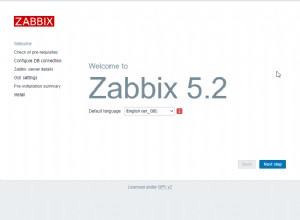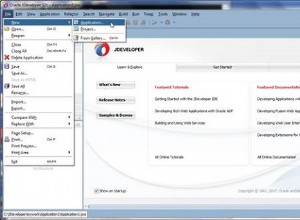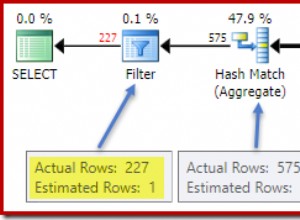Présentation
Souvent, il est nécessaire de contrôler la croissance de toutes les tables et fichiers de toutes les bases de données.
Dans cet article, nous allons explorer un exemple d'automatisation de la collecte de données sur la croissance des tables et des fichiers de base de données SQL Server.
Solution
- Créer une vue sur la taille de toutes les tables pour chaque base de données
USE [DATABASE_NAME] GO SET ANSI_NULLS ON GO SET QUOTED_IDENTIFIER ON GO CREATE view [inf].[vTableSize] as with pagesizeKB as ( SELECT low / 1024 as PageSizeKB FROM master.dbo.spt_values WHERE number = 1 AND type = 'E' ) ,f_size as ( select p.[object_id], sum([total_pages]) as TotalPageSize, sum([used_pages]) as UsedPageSize, sum([data_pages]) as DataPageSize from sys.partitions p join sys.allocation_units a on p.partition_id = a.container_id left join sys.internal_tables it on p.object_id = it.object_id WHERE OBJECTPROPERTY(p.[object_id], N'IsUserTable') = 1 group by p.[object_id] ) ,tbl as ( SELECT t.[schema_id], t.[object_id], i1.rowcnt as CountRows, (COALESCE(SUM(i1.reserved), 0) + COALESCE(SUM(i2.reserved), 0)) * (select top(1) PageSizeKB from pagesizeKB) as ReservedKB, (COALESCE(SUM(i1.dpages), 0) + COALESCE(SUM(i2.used), 0)) * (select top(1) PageSizeKB from pagesizeKB) as DataKB, ((COALESCE(SUM(i1.used), 0) + COALESCE(SUM(i2.used), 0)) - (COALESCE(SUM(i1.dpages), 0) + COALESCE(SUM(i2.used), 0))) * (select top(1) PageSizeKB from pagesizeKB) as IndexSizeKB, ((COALESCE(SUM(i1.reserved), 0) + COALESCE(SUM(i2.reserved), 0)) - (COALESCE(SUM(i1.used), 0) + COALESCE(SUM(i2.used), 0))) * (select top(1) PageSizeKB from pagesizeKB) as UnusedKB FROM sys.tables as t LEFT OUTER JOIN sysindexes as i1 ON i1.id = t.[object_id] AND i1.indid < 2 LEFT OUTER JOIN sysindexes as i2 ON i2.id = t.[object_id] AND i2.indid = 255 WHERE OBJECTPROPERTY(t.[object_id], N'IsUserTable') = 1 OR (OBJECTPROPERTY(t.[object_id], N'IsView') = 1 AND OBJECTPROPERTY(t.[object_id], N'IsIndexed') = 1) GROUP BY t.[schema_id], t.[object_id], i1.rowcnt ) SELECT @@Servername AS Server, DB_NAME() AS DBName, SCHEMA_NAME(t.[schema_id]) as SchemaName, OBJECT_NAME(t.[object_id]) as TableName, t.CountRows, t.ReservedKB, t.DataKB, t.IndexSizeKB, t.UnusedKB, f.TotalPageSize*(select top(1) PageSizeKB from pagesizeKB) as TotalPageSizeKB, f.UsedPageSize*(select top(1) PageSizeKB from pagesizeKB) as UsedPageSizeKB, f.DataPageSize*(select top(1) PageSizeKB from pagesizeKB) as DataPageSizeKB FROM f_size as f inner join tbl as t on t.[object_id]=f.[object_id] GO
- Créez une base de données spécifique et déterminez une table pour stocker des informations sur la croissance de toutes les tables de base de données :
USE [DATABASE_NAME] GO SET ANSI_NULLS ON GO SET QUOTED_IDENTIFIER ON GO SET ANSI_PADDING ON GO CREATE TABLE [srv].[TableStatistics]( [Row_GUID] [uniqueidentifier] NOT NULL CONSTRAINT [DF_TableStatistics_Row_GUID] DEFAULT (newid()), [ServerName] [nvarchar](255) NOT NULL, [DBName] [nvarchar](255) NOT NULL, [SchemaName] [nvarchar](255) NOT NULL, [TableName] [nvarchar](255) NOT NULL, [CountRows] [bigint] NOT NULL, [DataKB] [int] NOT NULL, [IndexSizeKB] [int] NOT NULL, [UnusedKB] [int] NOT NULL, [ReservedKB] [int] NOT NULL, [InsertUTCDate] [datetime] NOT NULL CONSTRAINT [DF_TableStatistics_InsertUTCDate] DEFAULT (getutcdate()), [Date] AS (CONVERT([date],[InsertUTCDate])) PERSISTED, [CountRowsBack] [bigint] NULL, [CountRowsNext] [bigint] NULL, [DataKBBack] [int] NULL, [DataKBNext] [int] NULL, [IndexSizeKBBack] [int] NULL, [IndexSizeKBNext] [int] NULL, [UnusedKBBack] [int] NULL, [UnusedKBNext] [int] NULL, [ReservedKBBack] [int] NULL, [ReservedKBNext] [int] NULL, [AvgCountRows] AS ((([CountRowsBack]+[CountRows])+[CountRowsNext])/(3)) PERSISTED, [AvgDataKB] AS ((([DataKBBack]+[DataKB])+[DataKBNext])/(3)) PERSISTED, [AvgIndexSizeKB] AS ((([IndexSizeKBBack]+[IndexSizeKB])+[IndexSizeKBNext])/(3)) PERSISTED, [AvgUnusedKB] AS ((([UnusedKBBack]+[UnusedKB])+[UnusedKBNext])/(3)) PERSISTED, [AvgReservedKB] AS ((([ReservedKBBack]+[ReservedKB])+[ReservedKBNext])/(3)) PERSISTED, [DiffCountRows] AS (([CountRowsNext]+[CountRowsBack])-(2)*[CountRows]) PERSISTED, [DiffDataKB] AS (([DataKBNext]+[DataKBBack])-(2)*[DataKB]) PERSISTED, [DiffIndexSizeKB] AS (([IndexSizeKBNext]+[IndexSizeKBBack])-(2)*[IndexSizeKB]) PERSISTED, [DiffUnusedKB] AS (([UnusedKBNext]+[UnusedKBBack])-(2)*[UnusedKB]) PERSISTED, [DiffReservedKB] AS (([ReservedKBNext]+[ReservedKBBack])-(2)*[ReservedKB]) PERSISTED, [TotalPageSizeKB] [int] NULL, [TotalPageSizeKBBack] [int] NULL, [TotalPageSizeKBNext] [int] NULL, [UsedPageSizeKB] [int] NULL, [UsedPageSizeKBBack] [int] NULL, [UsedPageSizeKBNext] [int] NULL, [DataPageSizeKB] [int] NULL, [DataPageSizeKBBack] [int] NULL, [DataPageSizeKBNext] [int] NULL, [AvgDataPageSizeKB] AS ((([DataPageSizeKBBack]+[DataPageSizeKB])+[DataPageSizeKBNext])/(3)) PERSISTED, [AvgUsedPageSizeKB] AS ((([UsedPageSizeKBBack]+[UsedPageSizeKB])+[UsedPageSizeKBNext])/(3)) PERSISTED, [AvgTotalPageSizeKB] AS ((([TotalPageSizeKBBack]+[TotalPageSizeKB])+[TotalPageSizeKBNext])/(3)) PERSISTED, [DiffDataPageSizeKB] AS (([DataPageSizeKBNext]+[DataPageSizeKBBack])-(2)*[DataPageSizeKB]) PERSISTED,--shows as the casting is changed [DiffUsedPageSizeKB] AS (([UsedPageSizeKBNext]+[UsedPageSizeKBBack])-(2)*[UsedPageSizeKB]) PERSISTED,--shows as the casting is changed [DiffTotalPageSizeKB] AS (([TotalPageSizeKBNext]+[TotalPageSizeKBBack])-(2)*[TotalPageSizeKB]) PERSISTED,--shows as the casting is changed CONSTRAINT [PK_TableStatistics] PRIMARY KEY CLUSTERED ( [Row_GUID] ASC )WITH (PAD_INDEX = OFF, STATISTICS_NORECOMPUTE = OFF, IGNORE_DUP_KEY = OFF, ALLOW_ROW_LOCKS = ON, ALLOW_PAGE_LOCKS = ON) ON [PRIMARY] ) ON [PRIMARY] GO SET ANSI_PADDING ON GO
TotalPageSizeKB indique la taille du tableau.
Le total de TotalPageSizeKB de toutes les tables de la base de données + la taille des tables système =la taille des données de la base de données.
- Déterminez la procédure de collecte des informations :
USE [DATABASE_NAME] GO SET ANSI_NULLS ON GO SET QUOTED_IDENTIFIER ON GO CREATE PROCEDURE [srv].[InsertTableStatistics] AS BEGIN SET NOCOUNT ON; SET TRANSACTION ISOLATION LEVEL READ UNCOMMITTED; declare @dt date=CAST(GetUTCDate() as date); declare @dbs nvarchar(255); declare @sql nvarchar(max); select [name] into #dbs from sys.databases; while(exists(select top(1) 1 from #dbs)) begin select top(1) @dbs=[name] from #dbs; set @sql= N'INSERT INTO [srv].[TableStatistics] ([ServerName] ,[DBName] ,[SchemaName] ,[TableName] ,[CountRows] ,[DataKB] ,[IndexSizeKB] ,[UnusedKB] ,[ReservedKB] ,[TotalPageSizeKB] ,[UsedPageSizeKB] ,[DataPageSizeKB]) SELECT [Server] ,[DBName] ,[SchemaName] ,[TableName] ,[CountRows] ,[DataKB] ,[IndexSizeKB] ,[UnusedKB] ,[ReservedKB] ,[TotalPageSizeKB] ,[UsedPageSizeKB] ,[DataPageSizeKB] FROM ['[email protected]+'].[inf].[vTableSize];'; exec sp_executesql @sql; delete from #dbs where [name][email protected]; end drop table #dbs; declare @dt_back date=CAST(DateAdd(day,-1,@dt) as date); ;with tbl1 as ( select [Date], [CountRows], [DataKB], [IndexSizeKB], [UnusedKB], [ReservedKB], [ServerName], [DBName], [SchemaName], [TableName], [TotalPageSizeKB], [UsedPageSizeKB], [DataPageSizeKB] from [srv].[TableStatistics] where [Date][email protected]_back ) , tbl2 as ( select [Date], [CountRows], [CountRowsBack], [DataKBBack], [IndexSizeKBBack], [UnusedKBBack], [ReservedKBBack], [ServerName], [DBName], [SchemaName], [TableName], [TotalPageSizeKBBack], [UsedPageSizeKBBack], [DataPageSizeKBBack] from [srv].[TableStatistics] where [Date][email protected] ) update t2 set t2.[CountRowsBack] =t1.[CountRows], t2.[DataKBBack] =t1.[DataKB], t2.[IndexSizeKBBack] =t1.[IndexSizeKB], t2.[UnusedKBBack] =t1.[UnusedKB], t2.[ReservedKBBack] =t1.[ReservedKB], t2.[TotalPageSizeKBBack]=t1.[TotalPageSizeKB], t2.[UsedPageSizeKBBack] =t1.[UsedPageSizeKB], t2.[DataPageSizeKBBack] =t1.[DataPageSizeKB] from tbl1 as t1 inner join tbl2 as t2 on t1.[Date]=DateAdd(day,-1,t2.[Date]) and t1.[ServerName]=t2.[ServerName] and t1.[DBName]=t2.[DBName] and t1.[SchemaName]=t2.[SchemaName] and t1.[TableName]=t2.[TableName]; ;with tbl1 as ( select [Date], [CountRows], [CountRowsNext], [DataKBNext], [IndexSizeKBNext], [UnusedKBNext], [ReservedKBNext], [ServerName], [DBName], [SchemaName], [TableName], [TotalPageSizeKBNext], [UsedPageSizeKBNext], [DataPageSizeKBNext] from [srv].[TableStatistics] where [Date][email protected]_back ) , tbl2 as ( select [Date], [CountRows], [DataKB], [IndexSizeKB], [UnusedKB], [ReservedKB], [ServerName], [DBName], [SchemaName], [TableName], [TotalPageSizeKB], [UsedPageSizeKB], [DataPageSizeKB] from [srv].[TableStatistics] where [Date][email protected] ) update t1 set t1.[CountRowsNext] =t2.[CountRows], t1.[DataKBNext] =t2.[DataKB], t1.[IndexSizeKBNext] =t2.[IndexSizeKB], t1.[UnusedKBNext] =t2.[UnusedKB], t1.[ReservedKBNext] =t2.[ReservedKB], t1.[TotalPageSizeKBNext]=t2.[TotalPageSizeKB], t1.[UsedPageSizeKBNext] =t2.[UsedPageSizeKB], t1.[DataPageSizeKBNext] =t2.[DataPageSizeKB] from tbl1 as t1 inner join tbl2 as t2 on t1.[Date]=DateAdd(day,-1,t2.[Date]) and t1.[ServerName]=t2.[ServerName] and t1.[DBName]=t2.[DBName] and t1.[SchemaName]=t2.[SchemaName] and t1.[TableName]=t2.[TableName]; END GOCette solution peut être modifiée pour collecter des données sur les tailles des tables de toutes les bases de données de toutes les instances requises de MS SQL Server.
- Définir la vue par les informations collectées :
USE [DATABASE_NAME] GO SET ANSI_NULLS ON GO SET QUOTED_IDENTIFIER ON GO create view [srv].[vTableStatisticsShort] as with d as (select DateAdd(day,-1,max([Date])) as [Date] from [srv].[TableStatistics]) SELECT t.[ServerName] ,t.[DBName] ,t.[SchemaName] ,t.[TableName] ,t.[CountRows] ,t.[DataKB] ,t.[IndexSizeKB] ,t.[UnusedKB] ,t.[ReservedKB] ,t.[InsertUTCDate] ,t.[Date] ,t.[CountRowsBack] ,t.[CountRowsNext] ,t.[DataKBBack] ,t.[DataKBNext] ,t.[IndexSizeKBBack] ,t.[IndexSizeKBNext] ,t.[UnusedKBBack] ,t.[UnusedKBNext] ,t.[ReservedKBBack] ,t.[ReservedKBNext] ,t.[AvgCountRows] ,t.[AvgDataKB] ,t.[AvgIndexSizeKB] ,t.[AvgUnusedKB] ,t.[AvgReservedKB] ,t.[DiffCountRows] ,t.[DiffDataKB] ,t.[DiffIndexSizeKB] ,t.[DiffUnusedKB] ,t.[DiffReservedKB] ,t.[TotalPageSizeKB] ,t.[TotalPageSizeKBBack] ,t.[TotalPageSizeKBNext] ,t.[UsedPageSizeKB] ,t.[UsedPageSizeKBBack] ,t.[UsedPageSizeKBNext] ,t.[DataPageSizeKB] ,t.[DataPageSizeKBBack] ,t.[DataPageSizeKBNext] ,t.[AvgDataPageSizeKB] ,t.[AvgUsedPageSizeKB] ,t.[AvgTotalPageSizeKB] ,t.[DiffDataPageSizeKB] ,t.[DiffUsedPageSizeKB] ,t.[DiffTotalPageSizeKB] FROM d inner join [SRV].[srv].[TableStatistics] as t on d.[Date]=t.[Date] where t.[CountRowsBack] is not null and t.[CountRowsNext] is not null GOIci, je voudrais attirer votre attention sur Diff. S'il est supérieur à 0, cela signifie que la table grandit plus vite chaque jour.
La collecte est censée être effectuée une fois toutes les 24 heures.
De la même manière, nous pouvons automatiser la collecte de la croissance des fichiers de toutes les bases de données en utilisant la vue suivante :
USE [DATABASE_NAME] GO SET ANSI_NULLS ON GO SET QUOTED_IDENTIFIER ON GO select t2.[DB_Name] as [DBName] ,t1.FileId ,t1.NumberReads ,t1.BytesRead ,t1.IoStallReadMS ,t1.NumberWrites ,t1.BytesWritten ,t1.IoStallWriteMS ,t1.IoStallMS ,t1.BytesOnDisk ,t1.[TimeStamp] ,t1.FileHandle ,t2.[Type_desc] ,t2.[FileName] ,t2.[Drive] ,t2.[Physical_Name] ,t2.[Ext] ,t2.[CountPage] ,t2.[SizeMb] ,t2.[SizeGb] ,t2.[Growth] ,t2.[GrowthMb] ,t2.[GrowthGb] ,t2.[GrowthPercent] ,t2.[is_percent_growth] ,t2.[database_id] ,t2.[State] ,t2.[StateDesc] ,t2.[IsMediaReadOnly] ,t2.[IsReadOnly] ,t2.[IsSpace] ,t2.[IsNameReserved] ,t2.[CreateLsn] ,t2.[DropLsn] ,t2.[ReadOnlyLsn] ,t2.[ReadWriteLsn] ,t2.[DifferentialBaseLsn] ,t2.[DifferentialBaseGuid] ,t2.[DifferentialBaseTime] ,t2.[RedoStartLsn] ,t2.[RedoStartForkGuid] ,t2.[RedoTargetLsn] ,t2.[RedoTargetForkGuid] ,t2.[BackupLsn] from fn_virtualfilestats(NULL, NULL) as t1 inner join [inf].[ServerDBFileInfo] as t2 on t1.[DbId]=t2.[database_id] and t1.[FileId]=t2.[File_Id] GO
Résultat
Dans cet article, nous avons exploré l'exemple de l'automatisation de la collecte de données sur la taille et la croissance de toutes les tables et fichiers SQL Server de toutes les bases de données. Il nous offre un contrôle complet sur la modification de la taille des fichiers de base de données et de ses tables, ainsi que la prise de mesures opportunes pour réduire la table ou le fichier, pour augmenter le périphérique de stockage de données ou pour diviser les informations en plusieurs périphériques de stockage de données.




